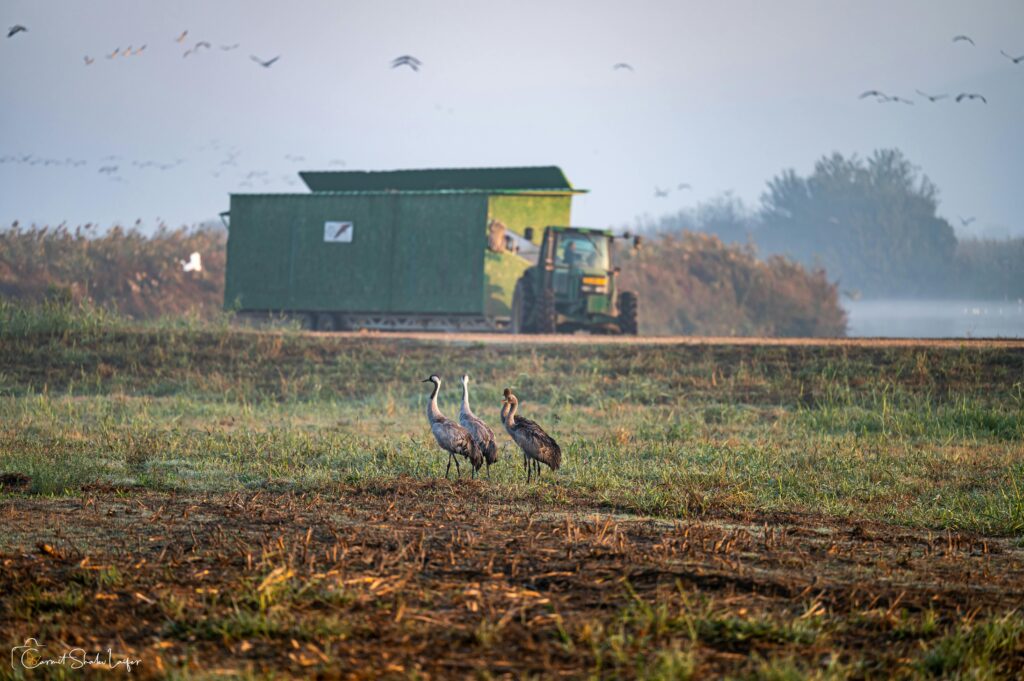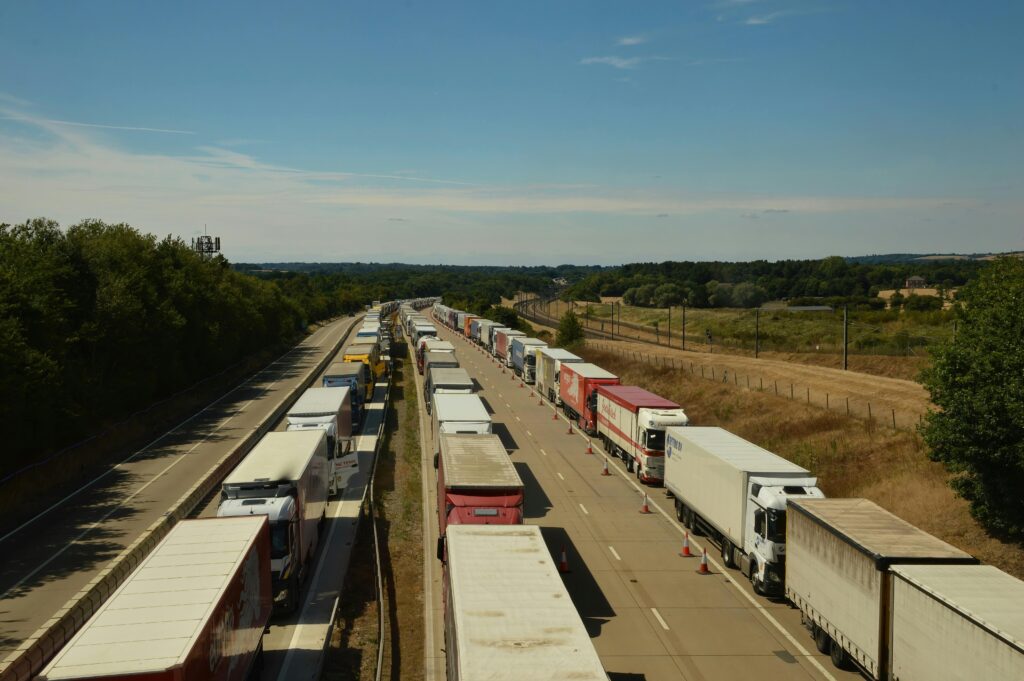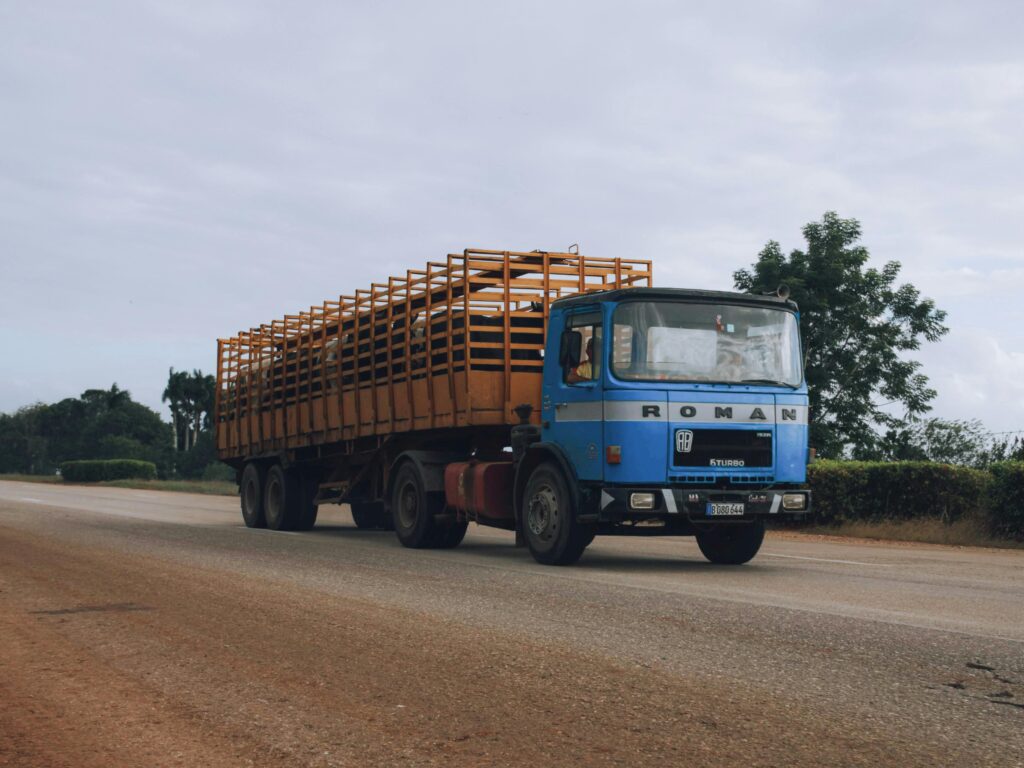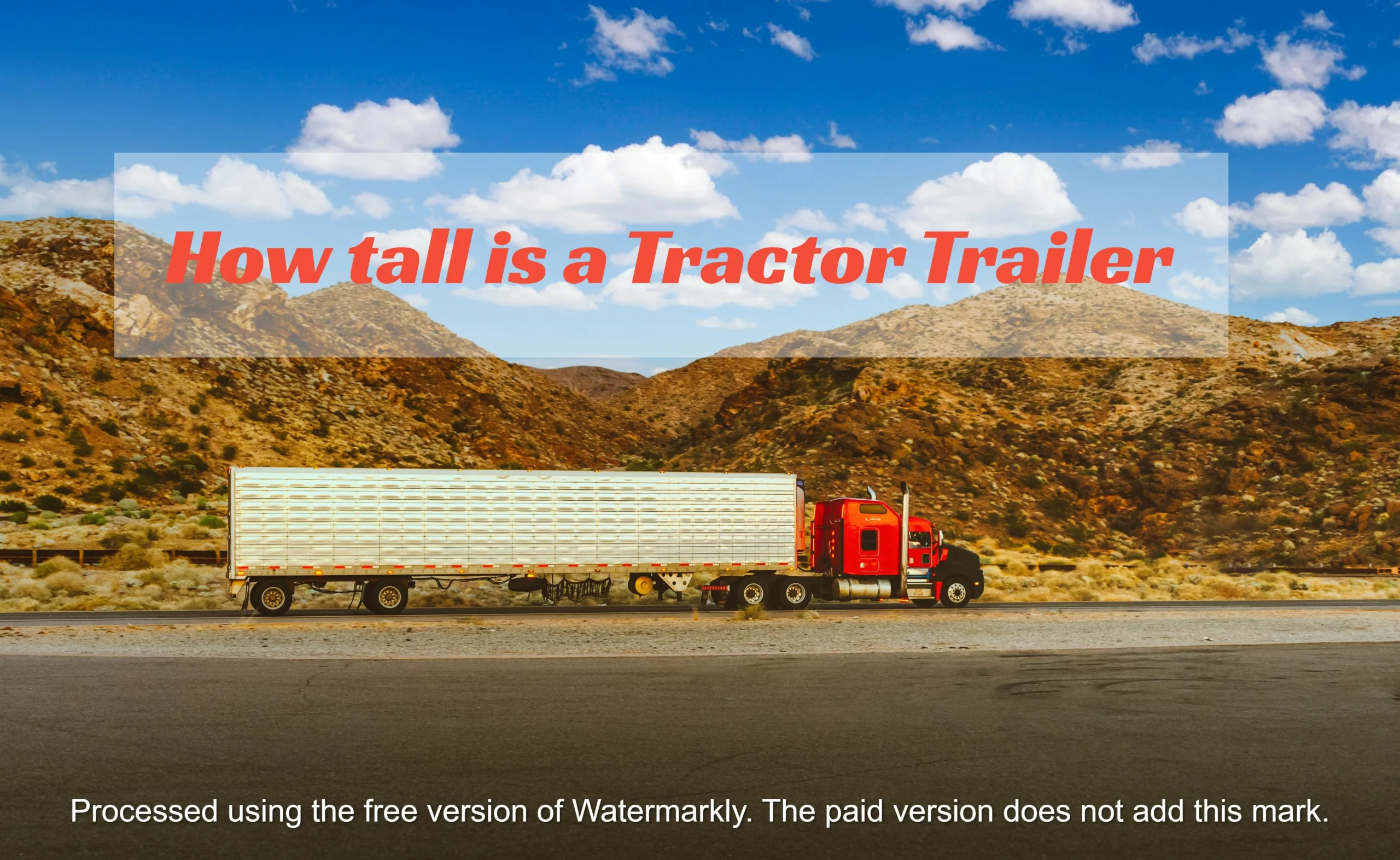A typical tractor-trailer, also known as a semi-truck or 18-wheeler, has a height of about 13.5 to 14 feet (4.1 to 4.3 meters). This measurement includes both the tractor (front part with the driver’s cabin) and the trailer (cargo-carrying rear part). Keep in mind that variations may exist among different truck models and configurations.
Introduction
In the world of commercial transportation, tractor-trailers, also known as semi-trucks or big rigs, are the backbone of the logistics industry. These towering vehicles are responsible for transporting a vast array of goods across cities, states, and even countries, playing a crucial role in keeping supply chains moving and economies thriving. However, their imposing size often raises questions and concerns, particularly regarding their height and the implications it has on safety, infrastructure, and operational efficiency.
This comprehensive guide aims to provide an in-depth exploration of tractor-trailer heights, covering every aspect from the factors influencing their dimensions to the measures taken to ensure safe and compliant operations. Whether you’re a logistics professional, a driver, or simply someone curious about these mechanical giants, this article will equip you with a wealth of knowledge and insights into the intricate world of tractor-trailer heights.
Understanding Tractor-Trailer Anatomy
Before delving into the specifics of tractor-trailer heights, it’s essential to understand the basic components that make up these colossal vehicles. A tractor-trailer consists of two main parts: the tractor (or the cab) and the trailer.
The Tractor
The tractor, also known as the cab or the truck, is the front portion of the vehicle where the driver sits. It houses the engine, transmission, and other essential systems that power and steer the entire rig. The height of the tractor can vary depending on the manufacturer, model, and specific design features, but it typically ranges between 12 and 14 feet.
The Trailer
The trailer is the rear portion of the vehicle, designed to carry cargo or loads. Trailers come in various types, each tailored to specific transportation needs. Some common trailer types include:
Dry Van Trailers
These enclosed trailers are primarily used for transporting general freight and consumer goods. They offer protection from the elements and secure storage for cargo.
Refrigerated Trailers
Also known as reefers, these trailers are equipped with refrigeration units to maintain specific temperature ranges, making them ideal for transporting perishable goods such as food, pharmaceuticals, and temperature-sensitive materials.
Flatbed Trailers
Flatbed trailers are open-air platforms without sidewalls or a roof, designed to transport oversized or irregularly shaped cargo that cannot fit into enclosed trailers.

Tanker Trailers
These specialized trailers feature a cylindrical tank for transporting liquids, gases, or bulk materials like chemicals, petroleum products, and other hazardous materials.
The height of the trailer can differ based on its purpose, cargo requirements, and the type of load it is designed to transport.
Factors Influencing Tractor-Trailer Heights
Several factors contribute to the overall height of a tractor-trailer, making it a complex and multifaceted consideration. Understanding these factors is crucial for ensuring compliance with regulations, maximizing operational efficiency, and maintaining safety standards.
Regulations and Legal Limitations
One of the primary factors influencing tractor-trailer heights is the legal limitations and regulations imposed by various governing bodies. These regulations are put in place to ensure safety on the roads and prevent damage to infrastructure such as bridges, overpasses, and tunnels.
In the United States, the Federal Highway Administration (FHWA) sets the maximum legal height for vehicles operating on the National Network of highways at 13 feet 6 inches (4.11 meters). However, individual states may have different height restrictions for their roads and highways, ranging from 13 feet to 14 feet 6 inches.
It’s crucial for trucking companies and drivers to stay informed about the latest height regulations in the areas they operate to avoid potential fines, delays, or accidents.

Cargo and Load Requirements
The nature of the cargo being transported plays a significant role in determining the height of a tractor-trailer. Certain types of cargo, such as oversized machinery, construction materials, or specialized equipment, may require taller trailers to accommodate their dimensions adequately.
In such cases, special permits and escort vehicles are often required to ensure safe transportation and compliance with height restrictions. Additionally, proper load securement and weight distribution techniques are essential to maintain vehicle stability and prevent rollovers or other accidents.
Aerodynamics and Fuel Efficiency
In the pursuit of improving fuel efficiency and reducing emissions, modern tractor-trailers are designed with aerodynamics in mind. Manufacturers often incorporate features like roof fairings, side skirts, and rear fairings to streamline the airflow around the vehicle, minimizing drag and turbulence.
These aerodynamic enhancements can add to the overall height of the tractor-trailer, but they also contribute to significant fuel savings and reduced environmental impact. Finding the right balance between aerodynamic efficiency and height restrictions is an ongoing challenge for manufacturers and regulatory bodies.
Equipment and Accessories
Additional equipment and accessories installed on tractor-trailers can also impact their overall height. For instance, air deflectors, cab guards, and other safety or functional additions may increase the vehicle’s height, even if only slightly.
While these components are vital for enhancing safety, visibility, and operational efficiency, their impact on height must be carefully considered to ensure compliance with regulations and clearance requirements.
Average Heights of Tractor-Trailers
While there is no one-size-fits-all answer to the question “How tall is a tractor-trailer?”, there are some general guidelines and averages that can provide a better understanding of their typical dimensions.
Standard Tractor-Trailer Heights
| Trailer Type | Average Height |
|---|---|
| Dry Van Trailers | 13 feet 6 inches to 14 feet |
| Refrigerated Trailers | Approximately 13 feet 6 inches |
| Flatbed Trailers | 8 feet to 9 feet |
| Tanker Trailers | 13 feet 6 inches to 14 feet 6 inches |
It’s important to note that these heights are approximate and can vary based on the specific make, model, and configuration of the tractor-trailer, as well as any additional equipment or accessories installed.
State-Specific Height Restrictions
While the FHWA sets the national standard for maximum vehicle height, individual states may have different regulations for their roads and highways. Here are the maximum legal height limits for tractor-trailers in selected states:
| State | Maximum Legal Height |
|---|---|
| California | 14 feet |
| Texas | 14 feet |
| Florida | 13 feet 6 inches |
| New York | 13 feet 6 inches |
| Illinois | 13 feet 6 inches |
It’s crucial to consult the most up-to-date regulations and guidelines for the specific state or jurisdiction in which you operate to ensure compliance and avoid potential penalties or safety issues.
Implications of Tractor-Trailer Heights
The towering height of tractor-trailers has several implications that need to be considered for safe and efficient operations, as well as infrastructure planning and development.
Infrastructure Clearance
One of the primary concerns regarding tractor-trailer heights is the clearance required for navigating through infrastructure such as bridges, overpasses, and tunnels. Even a slight miscalculation or oversight can lead to costly and potentially dangerous collisions, causing damage to both the vehicle and the infrastructure.
To mitigate these risks, various measures are taken, including:
- Clearly marked height restrictions and warning signs at low clearance points.
- The use of over-height detection systems that alert drivers of potential clearance issues.
- Dedicated truck routes that accommodate the heights of tractor-trailers.
- The implementation of stricter permitting processes for oversized or overweight loads.
Stability and Rollover Risks
The higher the center of gravity of a vehicle, the greater the risk of rollovers, especially during sharp turns, sudden maneuvers, or strong crosswinds. Tractor-trailers, with their significant height and weight distribution, are particularly susceptible to rollover accidents, which can have devastating consequences.
To address this issue, various safety measures are employed, such as:
- Electronic stability control systems that help maintain vehicle stability.
- Proper load securement and weight distribution practices.
- Driver training programs that emphasize safe driving techniques and load handling.
- Strict enforcement of speed limits and guidelines for navigating curves and ramps.
Aerodynamics and Fuel Efficiency
While aerodynamic enhancements can contribute to increased vehicle height, they also play a crucial role in improving fuel efficiency and reducing emissions. By streamlining the airflow around the tractor-trailer, these features can significantly reduce drag, resulting in better fuel economy and lower operating costs for trucking companies.
Manufacturers and regulatory bodies continually strive to strike the right balance between aerodynamic efficiency and height restrictions, ensuring that tractor-trailers meet both performance and safety requirements.
Overhead Clearance Monitoring
The height of tractor-trailers also necessitates careful monitoring and management of overhead clearances along transportation routes. Trucking companies and logistics providers employ various methods to ensure safe passage, including:
- Conducting thorough route surveys and mapping to identify potential clearance issues.
- Utilizing advanced routing software and GPS systems to plan and optimize routes based on height restrictions.
- Implementing strict protocols for reporting and addressing clearance-related incidents or near-misses.
Infrastructure Development and Maintenance
The height of tractor-trailers has significant implications for infrastructure development and maintenance. Bridges, overpasses, and tunnels must be designed and constructed with sufficient clearance to accommodate these towering vehicles, taking into account not only their current heights but also potential future increases due to aerodynamic enhancements or changing regulations.
Additionally, ongoing maintenance and inspection of existing infrastructure are necessary to identify and address potential clearance issues caused by factors such as settling, wear, or damage over time.
Failure to consider tractor-trailer heights in infrastructure planning and maintenance can lead to costly repairs, traffic disruptions, and safety hazards, underscoring the importance of collaboration between transportation authorities, infrastructure planners, and the trucking industry.
Safety Measures and Best Practices
To ensure the safe operation of tractor-trailers and to mitigate the risks associated with their heights, various safety measures and best practices have been established by regulatory bodies, industry associations, and individual trucking companies.
Driver Training and Awareness
Proper driver training and awareness are paramount when it comes to operating tractor-trailers safely and avoiding height-related incidents. Drivers must be thoroughly educated on height restrictions, clearance requirements, and the potential hazards associated with navigating through low-clearance areas.
Many trucking companies and organizations offer specialized training programs that cover topics such as:
- Identifying and adhering to height restriction signage.
- Conducting pre-trip inspections and route planning.
- Defensive driving techniques and situational awareness.
- Load securement and weight distribution best practices.
- Emergency procedures in case of incidents or collisions.
Regular refresher training and ongoing education are essential to ensure that drivers remain up-to-date with the latest regulations, safety protocols, and industry best practices.
Vehicle Maintenance and Inspections
Regular maintenance and inspections of tractor-trailers are critical to ensuring their safe operation and compliance with height regulations. This includes:
- Checking tire pressures and suspension systems to maintain proper ride height.
- Inspecting loads and cargo securement to prevent shifting or dislodging during transit.
- Verifying the proper functioning of safety systems, such as stability control and over-height detection systems.
- Adhering to manufacturer-recommended maintenance schedules and guidelines.
Comprehensive pre-trip and post-trip inspections are also crucial for identifying any potential height-related issues or deficiencies that could compromise safety or lead to violations.
Regulatory Compliance and Permitting
Tractor-trailer operators must stay up-to-date with the latest regulations and permitting requirements set forth by local, state, and federal authorities. This may involve:
- Obtaining special permits for oversized or overweight loads that exceed standard height limitations.
- Adhering to route restrictions and designated truck routes for taller vehicles.
- Complying with weight and load distribution regulations to maintain vehicle stability.
- Ensuring proper documentation and placarding for hazardous or specialized cargo.
Failure to comply with these regulations can result in significant fines, delays, and potential safety risks, making regulatory compliance a top priority for responsible trucking companies and drivers.
Community Awareness and Collaboration
Ensuring the safe operation of tractor-trailers requires a collaborative effort between trucking companies, regulatory bodies, and the communities through which these vehicles travel. This can involve:
- Public awareness campaigns to educate the general public about sharing the road with tractor-trailers and understanding their height limitations.
- Collaborating with local authorities and infrastructure planners to identify and address potential clearance issues or navigation challenges.
- Encouraging open communication and reporting mechanisms for drivers and community members to report hazards or incidents involving tractor-trailers.
By fostering a culture of awareness and cooperation, the transportation industry can proactively address height-related concerns and promote a safer environment for all road users.
Technology and Innovation
The trucking industry is continuously embracing new technologies and innovations to enhance safety and operational efficiency, including addressing challenges related to tractor-trailer heights. Some of these advancements include:
- Advanced routing and navigation systems that incorporate real-time data on height restrictions, clearances, and optimal routes.
- Collision avoidance and warning systems that detect low clearance areas, overhead obstructions, or potential collision risks, and alert drivers in real-time.
- Autonomous and semi-autonomous driving technologies that can precisely navigate height-restricted areas and adhere to clearance requirements.
- Modular and adaptable trailer designs that allow for adjustable height configurations based on specific cargo requirements or route conditions.
By leveraging these technological solutions, the trucking industry can mitigate the risks associated with tractor-trailer heights while improving overall transportation operations and safety standards.
Economic and Logistical Considerations
The height of tractor-trailers not only impacts safety and operations but also has significant economic and logistical implications for the transportation industry.
Cargo Capacity and Efficiency
The height of a tractor-trailer can directly affect its cargo capacity and the efficiency of transportation operations. Taller trailers often provide more cubic footage for cargo, allowing for increased load volumes and potentially reducing the number of trips required to transport goods.
However, this must be balanced against height restrictions and clearance limitations, as exceeding legal height limits can result in fines, delays, and potential damage to infrastructure or cargo. Finding the optimal balance between cargo capacity and height compliance is crucial for maximizing operational efficiency and profitability.
Route Planning and Logistics
Effective route planning and logistics are essential for ensuring the safe and efficient movement of tractor-trailers, taking into account their height and the associated clearance requirements. Trucking companies and logistics providers employ advanced routing software and mapping tools to identify the most suitable routes based on factors such as height restrictions, weight limits, traffic patterns, and delivery schedules.
By optimizing routes and minimizing detours or height-related delays, companies can reduce fuel consumption, improve delivery times, and increase overall operational efficiency, ultimately contributing to cost savings and customer satisfaction.
Infrastructure Investment and Optimization
The height of tractor-trailers also has implications for infrastructure investment and optimization. Transportation authorities and infrastructure planners must carefully consider the needs of the trucking industry when designing and constructing new bridges, overpasses, and tunnels, ensuring adequate clearance for taller vehicles.
Additionally, existing infrastructure may require upgrades or modifications to accommodate the evolving heights of tractor-trailers, driven by factors such as aerodynamic enhancements or changing regulations. Failure to address these needs can lead to bottlenecks, congestion, and increased safety risks, ultimately impacting the efficiency of the entire transportation network.
Collaboration between the trucking industry, infrastructure planners, and policymakers is essential to strike the right balance between meeting the needs of commercial transportation and ensuring the safe and efficient movement of goods and people.
Insurance and Liability Considerations
The height of tractor-trailers also has significant implications for insurance and liability in the transportation industry. Height-related incidents, such as collisions with low clearance infrastructure or rollovers due to stability issues, can result in substantial damage, injury, and potential legal liabilities.
Insurance providers must carefully assess the risks associated with tractor-trailer heights when determining coverage and premiums for trucking companies and drivers. Strict adherence to safety protocols, proper training, and compliance with height regulations can help mitigate these risks and potentially lower insurance costs for responsible operators.
Additionally, trucking companies must be proactive in implementing comprehensive risk management strategies, including regular maintenance, driver training, and adherence to best practices, to minimize their exposure to liability and potential legal disputes arising from height-related incidents.
Technological Advancements and Future Trends
As the transportation industry continues to evolve, technological advancements and innovative solutions are being developed to address the challenges posed by tractor-trailer heights and enhance safety, efficiency, and compliance.
Advanced Routing and Navigation Systems
Sophisticated routing and navigation systems are becoming increasingly prevalent in the trucking industry. These systems utilize real-time data, GPS tracking, and predictive analytics to provide drivers with the most up-to-date information on height restrictions, clearances, and optimal routes.
By integrating these systems into tractor-trailers, drivers can make informed decisions and adjust their routes accordingly, minimizing the risk of collisions or clearance issues. Additionally, these systems can be integrated with traffic data and road conditions to further optimize routing and ensure timely deliveries.
Collision Avoidance and Warning Systems
Advancements in sensor technology and vehicle-to-infrastructure (V2I) communication have led to the development of collision avoidance and warning systems specifically designed for tractor-trailers. These systems can detect low clearance areas, overhead obstructions, or potential collision risks and alert drivers in real-time, allowing them to take appropriate action.
Collision Avoidance and Warning Systems (continued)
Some of these systems even incorporate automatic braking or steering interventions to prevent accidents in critical situations. The integration of these advanced safety features can significantly reduce the risk of height-related collisions and improve overall safety for tractor-trailer operations.
Autonomous and Semi-Autonomous Driving Technologies
While still in the early stages of development and implementation, autonomous and semi-autonomous driving technologies hold significant promise for the trucking industry. These systems could potentially enhance safety and efficiency by ensuring precise navigation, adherence to height restrictions, and optimal route planning.
By leveraging advanced sensors, mapping data, and artificial intelligence algorithms, autonomous tractor-trailers could navigate complex routes and infrastructure with a high degree of accuracy, minimizing the risk of height-related incidents. Additionally, these technologies could help address the industry’s ongoing driver shortage by enabling remote or partially autonomous operations.
However, the integration of autonomous driving technologies in the trucking industry raises important questions and concerns regarding safety, liability, and regulatory frameworks, which will need to be addressed as these technologies continue to mature.
Modular and Adaptable Trailer Designs
Innovative trailer designs that allow for modular or adaptable height configurations are also being explored by manufacturers and transportation companies. These designs could potentially enable trucking companies to adjust the height of their trailers based on specific cargo requirements or route conditions, providing greater flexibility and efficiency.
For example, trailers with adjustable suspension systems or detachable roof sections could be lowered for routes with low clearance areas and then raised to accommodate taller loads when necessary. Additionally, modular trailer designs that allow for the easy reconfiguration of components could facilitate the transportation of oversized or irregularly shaped cargo while still adhering to height restrictions.
However, such designs would need to comply with existing regulations and ensure seamless integration with tractor units and loading/unloading facilities. Extensive testing and validation would also be required to ensure the safety and reliability of these adaptable trailer systems.
Smart Infrastructure and Intelligent Transportation Systems
The integration of intelligent transportation systems (ITS) and smart infrastructure technologies could also play a pivotal role in addressing the challenges posed by tractor-trailer heights. By leveraging advanced sensors, communication networks, and data analytics, transportation authorities and infrastructure planners can gain a more comprehensive understanding of vehicle movements and clearance requirements.
For instance, smart bridges and overpasses equipped with sensors and cameras could dynamically monitor clearances and alert drivers or traffic management systems of potential height-related issues. Additionally, real-time data from these systems could inform route planning and infrastructure maintenance decisions, allowing for proactive measures to be taken to ensure the safe passage of tractor-trailers.
The development of these smart infrastructure solutions will require significant investment and collaboration between various stakeholders, including transportation agencies, technology providers, and the trucking industry. However, the potential benefits in terms of improved safety, efficiency, and infrastructure optimization make this a promising area for future innovation.
Alternative Fuel and Propulsion Systems
As the transportation industry continues to explore alternative fuel and propulsion systems in pursuit of sustainability and environmental goals, the impact on tractor-trailer heights must also be considered. For example, the adoption of hydrogen fuel cell or battery-electric powertrains could potentially alter the overall design and configuration of tractor units, affecting their height and clearance requirements.
Manufacturers and regulatory bodies will need to work closely to ensure that any changes in propulsion technologies are accounted for in height regulations and infrastructure planning. Additionally, the integration of new propulsion systems may require the development of specialized maintenance and inspection protocols to ensure the safe operation of tractor-trailers with these alternative powertrains.
While the transition to alternative fuels and propulsion systems presents challenges, it also offers opportunities for innovation and the potential to optimize tractor-trailer designs for improved aerodynamics, weight distribution, and overall efficiency, which could indirectly impact height considerations.

Conclusion
The towering height of tractor-trailers is a critical consideration that impacts safety, operations, and logistics within the transportation industry. While legal regulations and limitations exist to ensure the safe movement of these colossal vehicles, a comprehensive understanding of the factors influencing their heights is essential for all stakeholders involved.
By adhering to best practices, implementing advanced technologies, and fostering collaboration between manufacturers, regulators, operators, and infrastructure planners, the trucking industry can continue to transport goods efficiently while prioritizing safety and minimizing the risks associated with tractor-trailer heights.
As the demand for transportation services continues to grow, it is crucial for the industry to stay ahead of the curve, embracing innovation and adapting to the evolving needs of the market. Emerging technologies, such as advanced routing systems, collision avoidance features, autonomous driving capabilities, and modular trailer designs, offer promising solutions to address the challenges posed by tractor-trailer heights.
Ultimately, a balanced approach that considers operational requirements, safety concerns, and the broader implications for infrastructure and economic efficiency will be key to ensuring the safe and efficient movement of tractor-trailers on our roads and highways.
By fostering a culture of continuous improvement, collaboration, and adherence to best practices, the transportation industry can navigate the complexities of tractor-trailer heights while maintaining its vital role in supporting global supply chains and economic growth.
FAQs
1. What is the maximum legal height for tractor-trailers in the United States?
The maximum legal height for tractor-trailers operating on the National Network of highways in the United States is 13 feet 6 inches (4.11 meters), as set by the Federal Highway Administration (FHWA). However, individual states may have different height restrictions for their roads and highways, ranging from 13 feet to 14 feet 6 inches.
2. Why are tractor-trailers so tall?
The height of tractor-trailers is primarily driven by cargo capacity and load requirements. Taller trailers can accommodate larger and taller loads, which is essential for efficient transportation of goods. Additionally, factors such as aerodynamics, stability, and regulatory compliance also influence the overall height of these vehicles.
3. What are the implications of tractor-trailer heights?
The towering height of tractor-trailers has several implications, including infrastructure clearance concerns, increased rollover risks due to a higher center of gravity, aerodynamic considerations that impact fuel efficiency, and the need for careful overhead clearance monitoring and infrastructure development/maintenance.
4. How do trucking companies ensure safe operations with tall tractor-trailers?
Trucking companies employ various safety measures, such as driver training and awareness programs, regular vehicle maintenance and inspections, adherence to regulatory compliance and permitting requirements, collaboration with local authorities and communities, and the adoption of advanced technologies like collision avoidance systems and routing/navigation tools.
5. What technological advancements are being made to address tractor-trailer height challenges?
The transportation industry is exploring and implementing several technological advancements, including advanced routing and navigation systems, collision avoidance and warning systems, autonomous and semi-autonomous driving technologies, modular or adaptable trailer designs, smart infrastructure and intelligent transportation systems, and the integration of alternative fuel and propulsion systems that may impact vehicle heights.
